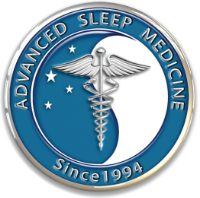Obstructive Sleep Apnea (OSA)--the most common type of sleep apnea--occurs when the tissue at the back of the throat sags into the airway, blocking your breath. Certain behaviors and physical characteristics can make it more likely that you will experience such a blockage.
Who gets sleep apnea?
Sleep apnea is more common in men and risk tends to increase once someone has reached middle age. However, sleep apnea can be found in virtually anyone, including people of any age, women, and children.
Physical Risk Factors
You may be at risk of sleep apnea if you match these criteria:
- Being overweight. Being overweight or obese is one of the most significant risk factors; about half of people with obstructive sleep apnea are overweight. When fat accumulates around the upper airway, it can change the shape of the airway or the extra weight can make it more likely that the throat tissue will collapse during sleep.
- A large neck. This is another very important physical indicator, often used by doctors to measure the likelihood that someone has sleep apnea. People with a neck circumference greater than 17 inches for men and 15 inches for women are considered at heightened risk for OSA.
- A small jaw. People with small jaws have tongues that are seated farther back in the mouth, increasing the probability of it falling into the airway.
- Large tonsils or adenoids. This is particularly problematic in children. If the tonsils are large enough, they can actually obstruct the throat and cause sleep apnea.
- High blood pressure/diabetes. Sleep apnea is correlated to these other health conditions.
- Family history can also play a role.
- Nasal congestion. Trouble breathing through the nose, because of allergies or a deviated septum, for example, can make sleep apnea more likely.
Actions that Increase Your Risk
Certain actions can exacerbate or increase the likelihood of an apnea occurring.
- Smoking. The inflammation and lung damage caused by smoking means that smokers are significantly more likely to have the disorder.
- Drinking alcohol. Alcohol can cause the throat muscles to relax more than usual.
- Sleeping on your back. During back sleeping, gravity pulls the tongue back into the throat, reducing airflow. If you have sleep apnea, sleeping on your stomach is a good option.
In general, observing a healthy lifestyle by getting sufficient exercise, maintaining a healthy weight, and taking care of your body decreases your risk for developing sleep apnea.
Talk to Your Doctor
Make sure to talk to your physician if you think you may have sleep apnea, or contact us for a consultation.








